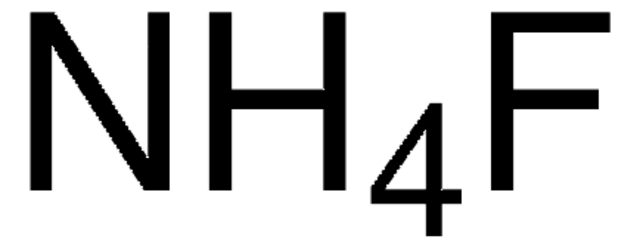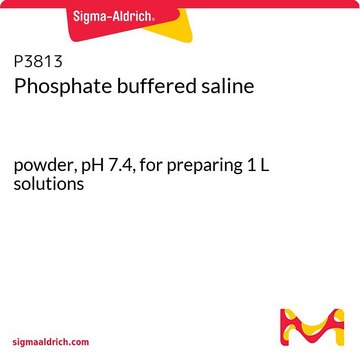338869
Ammonium fluoride
≥99.99% trace metals basis
Synonyme(s) :
Ammonia Hydrofluoride, Azanium fluoride
About This Item
Produits recommandés
Qualité
for analytical purposes
Niveau de qualité
Essai
≥99.99% trace metals basis
Forme
crystals and lumps
Impuretés
≤100 ppm METAL TRACE ANALYSIS (ICP)
Chaîne SMILES
N.F
InChI
1S/FH.H3N/h1H;1H3
Clé InChI
LDDQLRUQCUTJBB-UHFFFAOYSA-N
Vous recherchez des produits similaires ? Visite Guide de comparaison des produits
Catégories apparentées
Description générale
Application
- To modify the interface between the electron transport layer and the perovskite layer of solar cells. This helps to reduce interfacial defects and charge recombination enhancing power conversion efficiency of perovskite solar cells (PSCs).
- As a structure directing agent to prepare electroactive materials for supercapacitors.
- To synthesize NiF2/porous carbon (NPC) nanocomposite by a bottom-up method for cathodes of Li-ion battery. Heat treatment with NH4F produces a high yield of metal fluoride/porous carbon nanocomposites.
Mention d'avertissement
Danger
Mentions de danger
Conseils de prudence
Classification des risques
Acute Tox. 3 Dermal - Acute Tox. 3 Inhalation - Acute Tox. 3 Oral
Code de la classe de stockage
6.1C - Combustible acute toxic Cat.3 / toxic compounds or compounds which causing chronic effects
Classe de danger pour l'eau (WGK)
WGK 1
Point d'éclair (°F)
does not flash
Point d'éclair (°C)
does not flash
Équipement de protection individuelle
Eyeshields, Faceshields, Gloves, type P2 (EN 143) respirator cartridges
Faites votre choix parmi les versions les plus récentes :
Déjà en possession de ce produit ?
Retrouvez la documentation relative aux produits que vous avez récemment achetés dans la Bibliothèque de documents.
Notre équipe de scientifiques dispose d'une expérience dans tous les secteurs de la recherche, notamment en sciences de la vie, science des matériaux, synthèse chimique, chromatographie, analyse et dans de nombreux autres domaines..
Contacter notre Service technique








